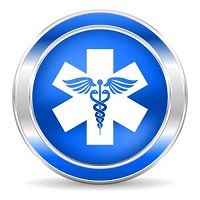Emergency Medical Info: there's an App for that
Older children sometimes feel stimagized wearing emergency medical information (EMI) bracelets that alert caregivers to conditions like diabetes and hemophilia. That can be a problem for those treating them in an emergency. But Kristina Derrick, MD, a Bronx pediatric endocrinologist, has a better idea. Put the information on the kid's cell phone--a device that most children 8 years old and up have these days.

People with allergies, bleeding disorders and other medical conditions have long used medical ID bracelets, wallet cards or other tangible objects to alert physicians caring for them in an emergency.
A Bronx physician says she has a better idea: cell phone apps. These can be accessed by physicians or other medical personnel and the apps are automatically downloaded on some cell phones' operating systems or are low-cost apps for purchase on others.
Apple's i)S 8 update, for instance, downloads the EMI app automatically.
Kristina Derrick, MD, MSc of the Division of Pediatric Endocrinology, Children’s Hospital
t
at Montefiore/Albert Einstein College of Medicine in NY
"It means emergency workers can just look at the phone, see the app, and get the information," said
In a research report published in Clinical Pediatrics, Derrick and colleagues wrote that children are particularly at risk in such situations.
One study in their hospital’s allergy clinic found that only 6% of children with food allergies were wearing “medic alert” bracelets. Another survey of nurses caring for children with hemophilia found that only from 25% to 50% of patients ages 6 to 18 wore some form of emergency medical identification (EMI.)
The reasons given for the lack of EMI were that parents believed they were likely to be with the child in situations involving medical care, that children felt stigmatized by the EMI, that EMI jewelry was too expensive or did not fit. "Or sometimes they just forget to wear it," she said.
Derrick said that even having parents on site in an emergency medical situation might not be helpful.
“Only 29% of patients were able to name all of the child’s medications and just 25% could provide the subspecialist name and contact number,” she wrote in the article.
As for a newer low-tech idea of communicating EMI—tattooing it on an arm, chest, or other body area—that is fraught with potential problems.
Do-not-resuscitate tattoos have sporadically made the news, but it is not clear if they have legal standing.
Derrick said “while this modality is of potential benefit to some people, it has drawbacks including risk of infection, body alteration, and limited medical community awareness of this form of identification.”
She also expressed doubt that children would want them.
But kids love cell phones. Derrick found studies showing that 78% of teens 13 to 17 have cell phones and that 47% of those devices are smart phones.
In the middle-school population, 8 to 12 year olds, 56% have cell phones.
Though the phones are often expensive, the additional cost of using them to store medical data is low. In contrast, Medic Alert bracelets cost $39.99 plus an annual fee of $19 for additional services like 24/7 access to the patient’s medical information by phone.
Derrick said she is looking into a newer type of bracelet that has a QR code that the patient or family member can use to upload the latest EMI information, such as current phone number for the child's doctor, and it can be scanned by the emergency care provider.
"A lot of kids in New York City have long commutes to school, an hour or more," she said, "particularly with kids who are diabetics it is important for them to carry some kind of EMI."
The next task, she said, is teaching medical personnel to check smartphones for the app, something she and colleagues are working on at their hospital.